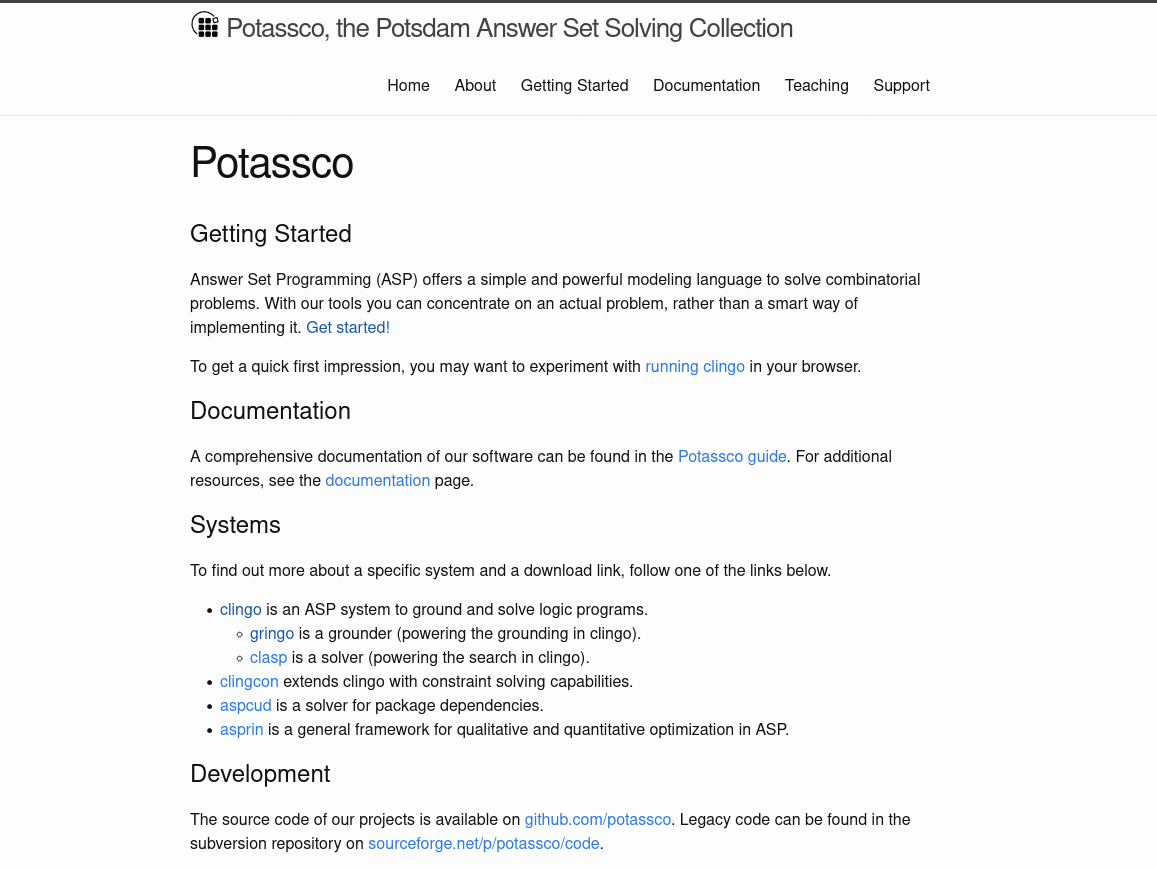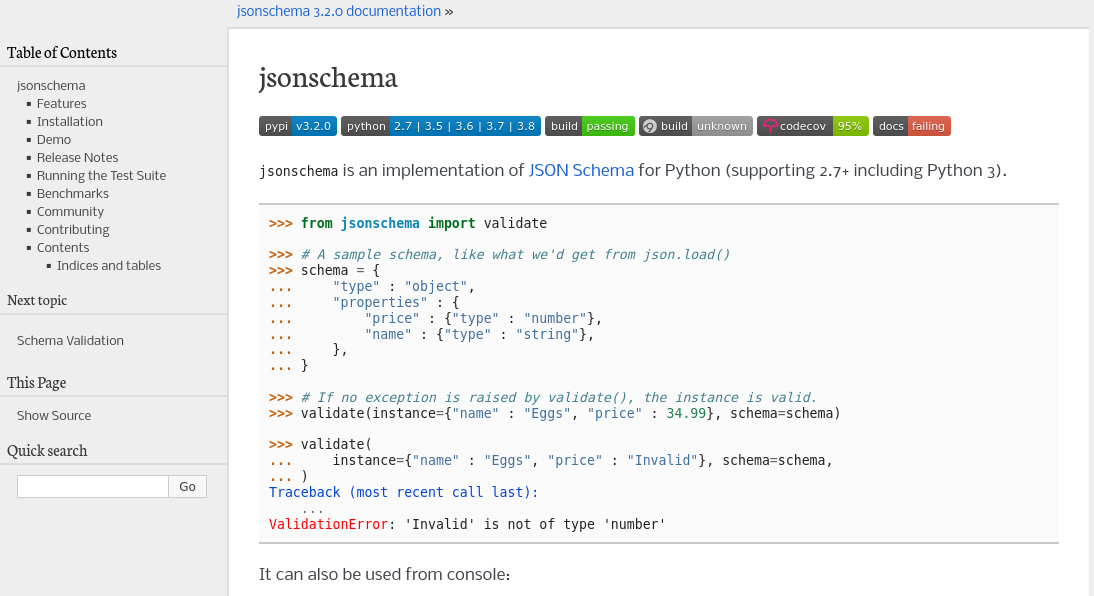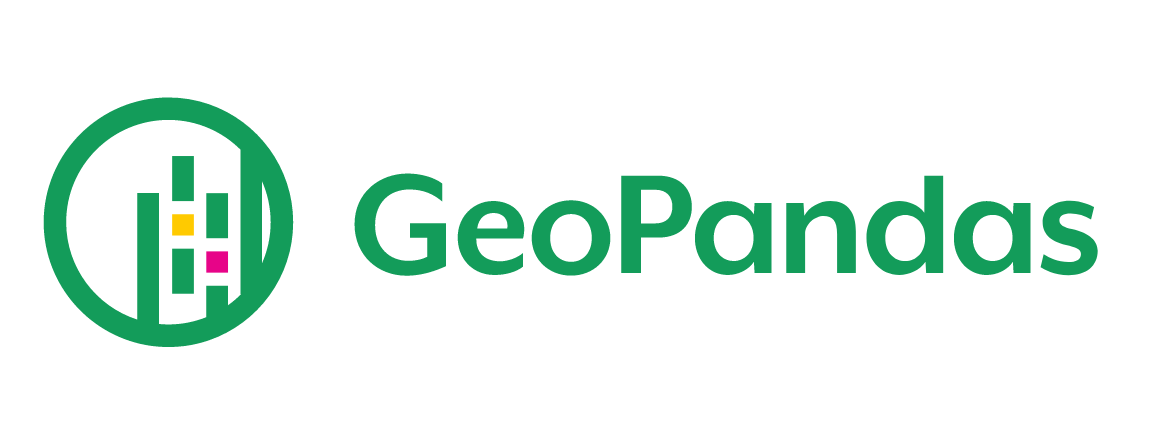clingo
When you use a package manager, how does it work? Or more generally, have you ever been interested in solvers? This week we showcase clingo, a grounder and solver for logic programs. It’s a fundamental tool to allow you to learn and do Answer Set Programming (ASP). If you are doing research software engineering in the direction of innovating research software, this library will be of interest to you. Why? Because we very likely can model existing methods with answer set programming to create new tools and ideas.

If you are already familiar with this software, we encourage you to contribute to the research software encyclopedia and annotate the respository:
otherwise, keep reading!
podman
This week for the RSEPedia showcase, we are highlighting another rootless container technology that is empowering developers and researchers to use containerization, podman!. We also want to point out that this week is the Container Plumbing Days conference, a free event where you can register and attend talks about everything from container building, to security, and standards. Woohoo!

If you are already familiar with this software, we encourage you to contribute to the research software encyclopedia and annotate the respository:
otherwise, keep reading!
jsonschema
For our RSEPedia showcase this week, let’s celebrate a library that has been empowering our json and yaml associated with Python projects for years to be parsed and verified as correct… jsonschema!

If you are already familiar with this software, we encourage you to contribute to the research software encyclopedia and annotate the respository:
otherwise, keep reading!
libabigail
Our spotlight this week is on libabigail, the ABI Generic Analysis and Instrumentation Library, a C++ library for creating and otherwise interacting with ABI artifacts. What are these artifacts? When you compile code into a binary, the binary basically keeps signatures for types, variables, functions, and variables. All of these together are called an ABI corpus, and we can inspect the corpus for a binary to see if it’s compatible with another library or system of interest, to inspect changes, or even to use them as features for some machine learning oriented approach. I’ve been using and hacking on this library and want to share with you my excitement for the set of tools.

geopandas
For our RSEPedia showcase this week, we want to direct your attention to GeoPandas!

If you are already familiar with this software, we encourage you to contribute to the research software encyclopedia and annotate the respository:
otherwise, keep reading!
3dfier
In the world of research software, we have a strong expectation about the kinds of libraries that we might see. There are many different kinds of tools for parsing datasets, or a domain specific utility, along with statistical or other numerical tools. But when visualization is thrown into the mix, or using a data file in a way that is surprising and unexpected? These are the kinds of repositories that are so different and unique that they capture our attention we have to share it! This is exactly the case with the library for the software showcase this week - tudelft3d/3dfier!
Delft in 3D by TU Delft from Filip Biljecki on Vimeo.
The quick video above can give you a sense of what this software is capable of doing - starting with basic maps and point clouds, and generating a beautiful rendered 3D scene, which might be what you’d guess based on the name “3dfier.” If you are already familiar with this software, we encourage you to contribute to the research software encyclopedia and annotate the respository:
otherwise, keep reading!
anTraX
The software we want to share this week is really neat - here we present Social-Evolution-and-Behavior/anTraX!
The image above comes directly from the arXiv supplementary material publication from the authors. You can probably guess from the above what the software does - we are tracking ants (or other small friends) to better understand their movement or behavior. Are you already familiar with this software? We encourage you to contribute to the research software encyclopedia and annotate the respository:
otherwise, keep reading!
curl
One of the aims of the Research Software Encyclopedia is to bring attention to libraries that we take for granted. The ones that easily come to mind are git and Linux, but today’s showcase honors another open source library that you’ve probably used and taken for granted - curl! Some might argue that this library is not qualified to be called research software, but we could probably agree that is plays an import role in the research ecosystem, which is why we want to showcase it today.

Are you already familiar with this software? We encourage you to contribute to the research software encyclopedia and annotate the respository:
otherwise, keep reading!
retriever
Can you imagine a database of datasets paired with a tool to automatically download, preprocess, and import into a desired format for your usage? For this week’s RSEPedia Software Survey, we introduce you to weecology/retriever, a tool to do just that.

Are you already familiar with this software? We encourage you to contribute to the research software encyclopedia and annotate the respository:
otherwise, keep reading!
An Introduction to the Research Software Encyclopedia
The Research Software Encyclopedia
A community driven, open source strategy to derive context-specific definitions of research software.
What is research software? Simply stated, research software exists to support research. If we want to pursue better research, we then must understand it [3]. This leads us to ask some basic questions:
- What is research software?
- What are criteria that might help to identify research software?
- How do we organize research software?
While we could make an attempt to derive a holistic definition, this approach would be limited in not taking into account the context under which the definition is considered. For example, needing to define research software to determine eligibility for a grant is a different scenario than a journal needing to decide if a piece of software is in scope for publication, and both are different from an effort to study research software. In all cases, the fundamental need for a context-specific definition is not only important in these scenarios, but also for basic communication. If I am to call something research software, it’s essential that you know the criteria that I am using to consider it, how highly I consider each of those criteria, and a possibly classification that I am using to further drive my choices.
A Context Specific Definition
This effort, paired with the document that prompted its original thinking, takes the stance that it would be very challenging if not possible to create a single definition for research software. However, it’s very reasonable to derive criteria, or questions that we can easily answer, that can be used to determine a relative strength of a piece of software on a dimension of “strongly yes” to “strongly no.” We can also derive a taxonomy, or categorization of software types that might further filter this decision making. Both of these classifications, a scoring and location in the taxonomy, can then be transparently stated and used to answer if a specific piece of software is indeed research software. Importantly, while the choice of threshold for scoring and taxonomy filter is subjective, the classification and answers to the criteria are not. We have a transparent, methodic way to define pieces of software, and we leave some final definition up to the individual or group that warrants needing the definition.
Goals
1. Community Developed
It’s common for self-acclaimed “experts” or people in power to decide how things are going to be. This initiative aims to be completely transparent, open source, and community driven. Anyone can contribute to, or give feedback on the taxonomy, criteria, and even the software in the database. Annotation can happen with prompts from social media or slack communities, or in bulk on your local machine. We don’t view annotation as a task that would be suited for Mechanical Turk, or even necessary to do in bulk. Annotation takes time, and it should be fun. If we share one piece of software per week, not only will you be able to quickly give feedback and get on with your day, you’ll also potentially learn about a new tool that might be useful to you. Your contributions are then maintained in the repository history, and you get proper open source credit for your efforts.
2. Automated and Sustainable
It’s also often the case that efforts require grant funding, or long term funding of servers or databases to provide a resource. This initiative is hosted entirely on open source version control, and does not require any funding as long as these free services persist. This strategy is strong because even if the current version control service goes away (unlikely), since git paired with continuous integration (CI) is the backbone of the tooling, it would be very easy to set up the same repository elsewhere.
3. Understanding for Science
An understanding of the qualities of software that are required to support this research life-cycle is essential to continue and maximize the potential for discovery. In this light, research software is also about people, namely the developers and community that utilizes it. If we can better characterize this community to better understand how its needs map to research software, we can again better support scientific discovery.
[3] C. Goble, “Better Software, Better Research,” in IEEE Internet Computing, vol. 18, no. 5, pp. 4-8, Sept.-Oct. 2014, doi: 10.1109/MIC.2014.88.
How does it work?
By way of separation of tools to allow for participation or development in the subset that is of interest to you, we achieve a holistic space of software, database, and application programming interfaces.
- Taxonomy and Criteria are served programaticaly from the Research Software Engineering (rseng) repository.
- Database: the Research Software Encyclopedia drives generation and update of the database served at rseng/software.
- Update is automated using GitHub Workflows.
- Annotate directly via the repository interface or by opening an issue or in bulk on your local machine
- Use the api to see repos, taxonomy, and criteria
- Use the rse tool to manage a software database, create an interface, or export metrics.
How can I get involved?
Community effort means that we are looking for your contributions! And there are so many ways to get involved!
1. Work on the Manuscript
There is a manuscript in progress that your feedback and contribution would be greatly valued on! If you contribute, please add your name as a co-author. We are planning a few small talks in the next few months, and will aim for submitting somewhere after that.
2. Taxonomy and Criteria
The taxonomy and criteria are served programatically from the Research Software Engineering (rseng) repository. If you want to contribute to either of those, that’s the repository you should contribute to.
3. Research Software Encyclopedia
The rse management tool along with it’s annotation and general interfaces is the core
software that powers most of what we’ve discussed above. You can contribute or give feedback to rse to make the library better.
4. Software Database
The software database itself is hosted at rseng/software. Whether you annotate one software entity weekly via social media prompt or clone the repository for bulk annotation, your contributions are maintained in version control to always proudly show you as a contributor. And of course any other feedback that you might have, please post issues, and questions on any of the issue boards associated with the repos above!
Annotate your Software
In this tutorial, we will walk through using the Research Software Encyclopedia (rse) to annotate software in the
rseng/software database with
criteria and taxonomy items.
Showcase your Software
In this tutorial, we will walk through using the Research Software Encyclopedia (rse) with criteria hosted here to generate a static interface to display your research software.
Introducing Research Software Criteria and Taxonomy
Welcome to Rseng, an endpoint to find research software criteria and taxonomy. This interface deploys a versioned taxonomy and set of criteria for research software.